Discover Sumba Island: 5 Reasons to Travel to the Wild Wild West of Indonesia
PUBLISHED January 9th, 2019 07:00 am
In many ways, Sumba is like a lost world. A 55-minute charter flight from Bali, it’s twice the size of the latter, and yet has only one-sixth of its population. A destination a little further from Asia’s usual beach holiday haunts, Sumba lies to the south of Flores, the east of Timor, and the north of Australia with the Indian Ocean in between. There’s no relevant industry or tourism to speak of, it’s the most impoverished region in Indonesia where headhunting was a common practice as recently as the 1960s. But there is every reason to come here; let us tell you:
Sumba is what Bali used to be
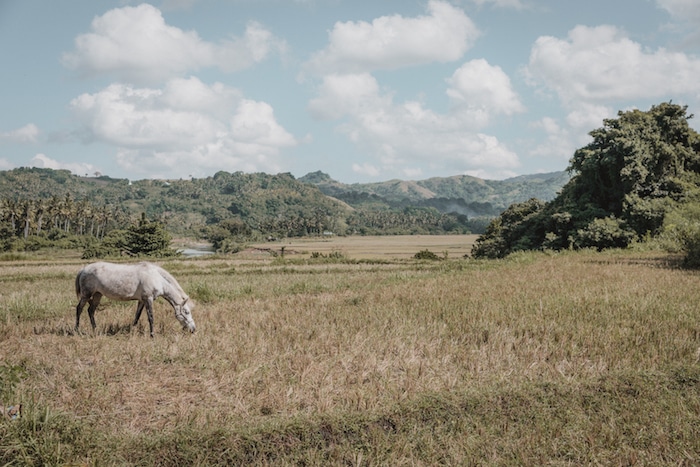
This is an island where I get the spirit of Bali of 30 years ago, with all its wilderness and ethnographic treasures.
Foreign presence in the archipelago started around the 18th century when Chinese and Arab traders arrived, bringing in horses, exporting sandalwood, and taking away slaves. Horses are now found all over Sumba, still an essential part of Sumbanese culture. Then, the Dutch East Indies took over the “Sandalwood Island” – as they liked to call it – and only relinquished control of Indonesia after World War II, with the island finally gaining independence in 1962.
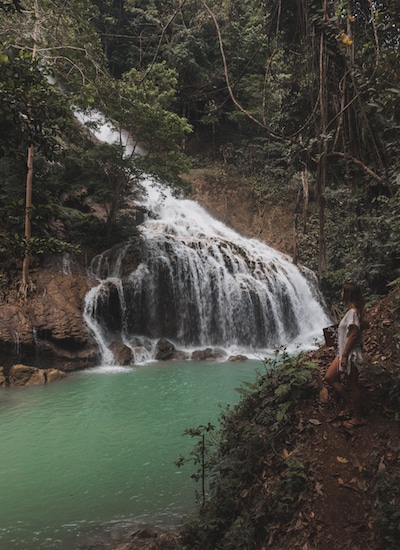 It’s remote and wild (in a good way)
It’s remote and wild (in a good way)
Colonial forces, however, have never taken control of headhunting islanders, which had led to the preservation of Sumba’s unique personality, allowing visitors a precious sense of adventure.
Sumba has always been isolated on the far end of the country; nothing much has changed with the exception of a handful of luxury resorts catering to travellers who really want to get away from it all.
As we jumped into the car and headed west from Tambolaka Airport, the virgin jungle and tribal villages blew me away. I have not seen a landscape this pristine in most of Southeast Asia; nor did we see any other people over a hour and the half drive other than the couple sharing our ride.
The vast majority of its 600,000 population live like the old days: dispersed across villages, dependent on agriculture. Permissions to explore the territory are still negotiated with tribal kings and the few towns I come across are little more than trading posts or missionary settlements.

Horse rides on uninhabited beaches
Here’s where you’ll find some of the most compelling beaches in Southeast Asia.
In West Sumba, the 2.5km-long white-sand beaches stands out amidst the thousands of volcanic islands. Rice paddies frame the blue ocean, while the cluster of black rock comes out of the turquoise waters. In the distance, I see mountains and more jungle. Sprinkled throughout the countryside are hilltop villages with thatched clan houses clustered around megalithic tombs.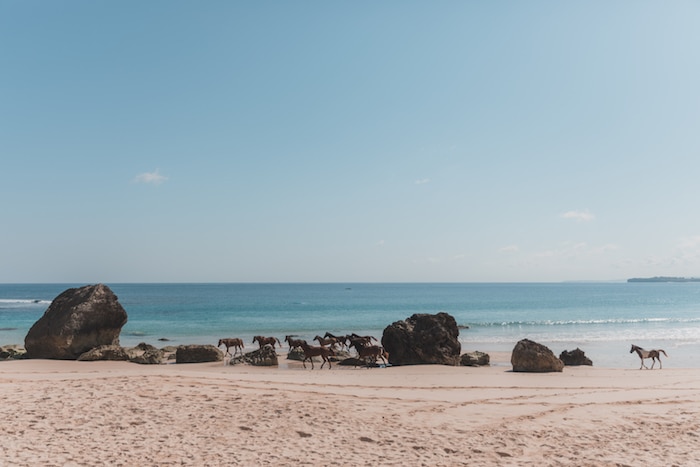
We are on the beach of Nihiwatu, watching horses going for a swim as we go for an afternoon walk. It doesn’t take long until I join them in the water, and in the next day, under an extraordinary sunset, I gallop along the empty and wild stretch of pristine white sands. There’s no evidence of human habitation, no footprints ahead of me.
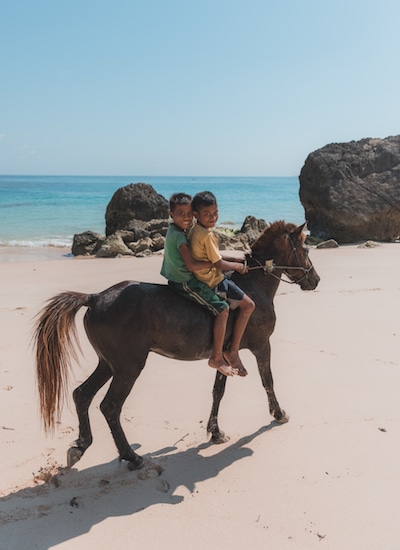 Surf one of the best breaks of Indonesia
Surf one of the best breaks of Indonesia
Then, on the same beach, there is a wave – a famous one. It’s called Occy’s Left, which has long been embraced by Claude Graves, who first set camp in Nihiwatu beach in 1988 and founded a surf resort.
A few years ago, though, Chris Burch (ex-husband of designer Tory Burch) took over the property and turned it into a luxury adventure resort. Occy’s, one of the best surf breaks in Indonesia, remains the main attraction of Nihiwatu but it’s become a controversial one.
Since the early days, it was established as a private wave in agreement with the local tribes. Only guests of Claude’s resort had the right to surf it and today, surfers staying at Nihi Sumba (as it’s called now) need to pay a fee of 100 dollars to ride it. Personally, I have mixed feelings about how the “new explorers” handle the special wave. In a way, keeping Occy’s private helps to protect Nihiwatu against the crowds I often try to escape from, but I also believe a wave shouldn’t belong to any one person.
Experience the Sumbanese culture
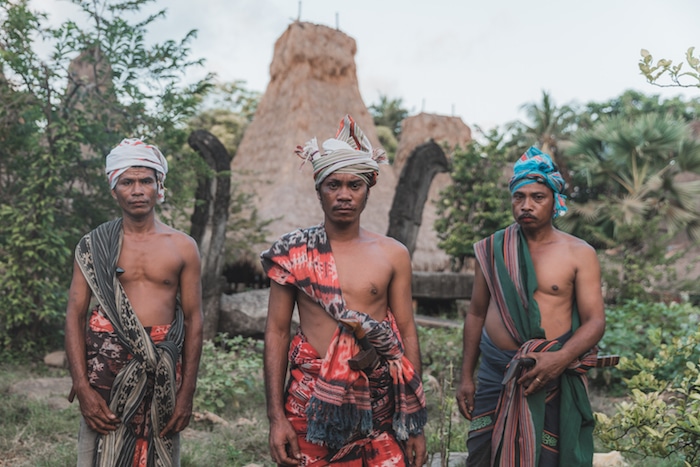
“One needs to be brave to get into the ocean. It is scary”, says Tiger, our local guide, as I wonder why we barely see any fishermen or locals in the water along the beaches of Sumba. “Fishing requires courage”, he explains, “most of us rely on farming Sumba horses or Indian cows”. Natural riches aside, the real Sumba experience is to dive into its culture.
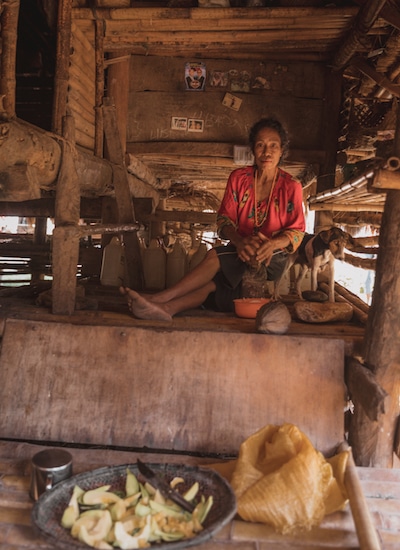 It is overwhelmingly rural, given over to old-growth forests, rice and maize fields, banana trees and coconut palms. We go deeper inland and visit century-old Sumbanese villages, including Praijing.
It is overwhelmingly rural, given over to old-growth forests, rice and maize fields, banana trees and coconut palms. We go deeper inland and visit century-old Sumbanese villages, including Praijing.
I watch a group of men eating betel, the common intoxicant of the region, that turns one’s mouth bright red and reminds me of a previous expedition to Papua New Guinea. I also see the alang-alang, the tower of traditional bamboo and grass construction, Sumba’s distinctive architectural style. But it is true that some of the roofs have already started to turn into concrete.
Sumba is an island of shamans and ancestor worship. It’s so connected to tribal culture, you feel the urge to get out and explore what makes up this lost world. However, even on one island, there are differences. The East is a highly stratified society based on castes, whereas the West is more ethnically diverse. The Sumbanese still believe in an animist religion, in which life is a kind of purgatory.
Animals are both worshipped and slaughtered as part of rituals. Funerals involve the sacrifice of dozens of animals—pigs, buffalo, cows, even horses. Hand-carved spears and swords feature during the legendary game of pasola (played by throwing wooden spears at the opponent while riding a horse), a festival celebrating the rice-planting season in West Sumba that’s considered the most important event of the island.
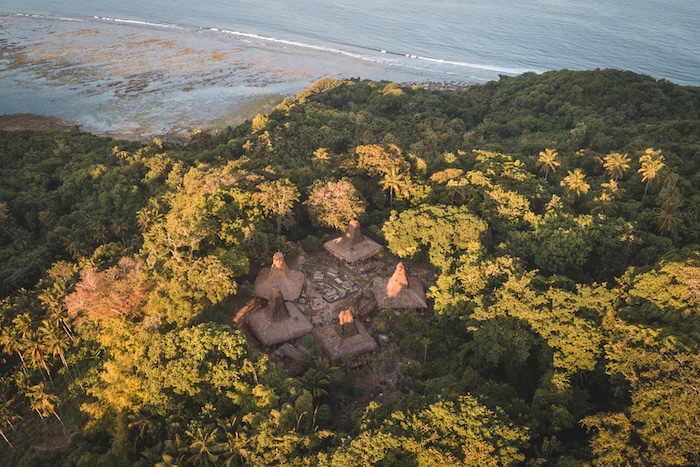
Sumba’s remoteness and isolation have long sounded irresistible to me. It’s a place where I experience pristine waterfalls where locals come to bathe, trek wild trails and ride wild horses. But to feel the heartbeat of Sumba is to meet its people, connect with its religion and witness its ancient rituals. Sumba makes me realize that even the most compelling wilderness is not as interesting as the people who occupy it.
All images courtesy of Nanda Haensel.
